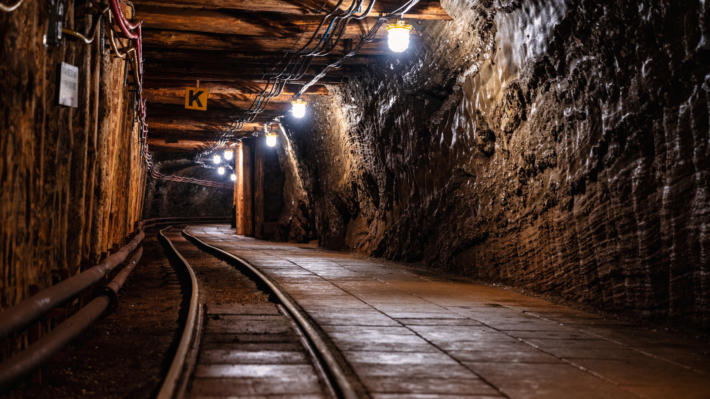How Sustainability is Transforming the Mining Industry

Welcome to a deep dive into the pivotal role sustainability plays in the modern mining industry! Growing pressure from investors, governments, and communities are compelling mining operations to adapt and evolve for the better. They’re harnessing the power of environmental sustainability to protect ecosystems and mitigate climate change. They’re adopting social sustainability practices to build trust and uphold human rights. They’re leveraging economic sustainability to fuel long-term viability. Finally, they’re deploying cutting-edge technological innovation and strengthening governance and reporting systems for more accountability. Join us as we unpack all this and more in our comprehensive unveiling of how sustainability is truly reshaping the mining industry!
Environmental Sustainability in Mining
Minimizing Land Use and Deforestation
In the realm of environmental sustainability, minimizing land use and deforestation is a primary concern for the mining industry. In order to shrink their ecological footprint, numerous companies are endorsing reforestation initiatives, land rehabilitation programs, and devising biodiversity action plans. A shining example is the reforestation project initiated by Alcoa in Western Australia. They have rehabilitated more than 90% of the cleared lands with a successful seedling survival rate of about 60%. This critical endeavor to safeguard ecosystems signals a major shift in the mining industry’s attitude towards environmental responsibility.
Water Stewardship Initiatives
Water is a vital resource, and its conservation is a defining issue in environmental sustainability. Mining companies are responding by implementing water stewardship initiatives that include water recycling and dry processing techniques. These strategies reduce freshwater consumption and prevent water contamination. Prominent companies like Anglo American are pioneering such efforts with their revolutionary waterless mine concept.
Energy Efficiency and Renewable Sources
Decarbonizing the energy mix is a pivotal challenge for the mining industry. Transitioning to renewable energy sources, such as solar and wind power, helps combat this issue. Furthermore, many mining organizations are improving energy efficiency through the electrification of vehicles and equipment, like Newmont’s investment in an all-electric underground fleet. These moves serve to lessen reliance on fossil fuels, reduce greenhouse gas emissions, and contribute to a sustainable mining sector.
Waste Management and Circular Economy
Another crucial aspect of environmental sustainability in mining is waste management. Efficient waste handling systems can minimize the impact on the environment. Examples of this approach in the mining industry include repurposing waste rock for construction and reprocessing tailings (the residue leftover after the mining operation) to extract valuable minerals. Companies are striving towards a circular economy by incorporating these and similar measures into their operations.
Climate Change Mitigation Strategies
Climate change mitigation is another key priority for environmentally sustainable mining. The industry is adopting innovative strategies to reduce greenhouse gas emissions. These encompass the use of electric and autonomous vehicles, energy-efficient practices, and innovative mining methods like in-situ leaching. The collective implementation of these strategies represents the industry’s commitment to combating climate change.
Takeaway: This section underscores the importance of environmental sustainability in the mining industry. Adequate strategies are essential to mitigate harmful effects on the environment and achieve a sustainable future for mining.
Social Sustainability in Mining
Societal sustainability within the mining sector has become a critical issue, with an emphasis on different aspects such as community engagement, indigenous rights, labor practices, and human rights. By committing to social sustainability, mining companies can build stronger relationships with local communities, adhere to ethical practices, and contribute to the overall well-being of people involved at all organizational levels.
Community Engagement Practices
Community engagement plays a pivotal role in achieving social sustainability within the mining industry. Entities within the sector are increasingly taking on board a community-oriented approach that involves local hiring, skills development initiatives, transparent communication, and benefit-sharing agreements. Such efforts help to foster trust between the mining entities and local communities, ensuring that the enterprises maintain their social license to operate. For example, Rio Tinto runs numerous community engagement programs to keep the local communities involved in their operations, support local businesses, and develop skills of the local workforce.
Respecting Indigenous Rights
There has been an increased emphasis on respecting the rights and cultural heritage of indigenous communities within the mining industry. Practices involving free, prior, and informed consent (FPIC) for mining projects are now becoming a standard requirement. Further, companies such as BHP are collaborating closely with indigenous communities to manage any impact their operations might have on indigenous heritage sites.
Improving Labor Practices
Improved labor practices are an essential component of social sustainability within the mining industry. Aspects including fair wages, safe working conditions, health and safety protocols, and advanced training programs are continually defined and enhanced to augment the well-being of the workforce. One such example is Vale SA, a Brazilian mining company that has implemented stringent safety protocols and regular training programs for employees to ensure a safer and more secure workplace environment.
Promoting Human Rights in Mining
Promotion of human rights is crucial for achieving social sustainability in mining operations. Mining companies are developing and adopting human rights policies and procedures to address issues such as child labor and exploitation. The use of advanced technologies and strict adherence to labor laws can also aid in eliminating these malpractices. Companies like Anglo American have comprehensive human rights policies and due diligence processes in place to prevent, identify and address any potential human rights impacts.
In conclusion, aligning mining operations with social sustainability practices presents an opportunity to elevate the global mining industry. By integrating these practices, mining businesses can foster stronger relationships, uphold moral obligations, and contribute positively to society while also boosting their reputational standing.
Economic Sustainability in Mining
Economic sustainability is a vital aspect of mining operations that more companies are starting to prioritize. Here’s how it’s being implemented in the mining industry.
Cost Reduction Through Sustainability
Sustainability is not only a matter of ethics or environmental protection. It also makes strong economic sense. Companies are finding that sustainable practices like energy efficiency, waste reduction, and precision mining can also lead to significant cost savings. For example, Anglo American has reported a drop in production costs due to their water and energy-saving strategies, leading to improved profitability.
Innovative sustainable practices also have the potential to turn waste into profit. Companies are reprocessing tailings for valuable minerals and repurposing waste rock for construction, which engages the principles of a circular economy and has the potential to create new revenue streams.
Innovation and Research Development
Investing in research and development to find ways to reduce environmental impact, while also boosting efficiency and productivity, is crucial for the long-term sustainability of mining companies. Technology is playing a crucial role here by providing new ways for companies to mine more safely, efficiently, and sustainably. Some of these innovations include autonomous vehicles, in-situ leaching, and dry processing techniques.
Operational Diversification
Diversifying operations is another stуratеgy to ensure long-term viability. Relying solely on one commodity or market is risky due to fluctuations in commodity prices and economic conditions. Diversification allows mining companies to mitigate these risks and weather economic downturns. Vale, a global mining company, has diversified its operations, now extracting a range of minerals including iron ore, nickel, copper, and gold.
Implementing Sustainable Business Models
Sustainable business models, such as those based on shared value and the circular economy, are gaining traction in the mining industry. These models are designed to create long-term value in a way that benefits not just companies but also communities and ecosystems. One instance is BHP’s Social Value strategy which aims to generate more value for its stakeholders while creating less impact on the environment.
Engaging Investors with ESG Metrics
Today, investors are not only interested in financial returns but also in how companies are addressing environmental, social, and governance (ESG) issues. Mining companies are starting to understand the importance of ESG to their investors. By promoting sustainability efforts and long-term value creation using ESG metrics, companies like Rio Tinto are attracting more socially conscious investors.
The economic sustainability of mining operations is more important than ever before. It’s clear that a well-executed sustainability strategy can lead to cost savings, profit opportunities, and a healthier bottom line for mining companies. Furthermore, such efforts are likely to prove beneficial as companies face increasing investor and regulatory pressure to take meaningful action on sustainability issues.
Technological Innovation in Mining Sustainability
Advances in technology play a considerable role in driving sustainability within the mining industry. Modern solutions not only reduce the environmental footprint of mining operations, but also contribute to safer working conditions and improved efficiency.
Digitalization and Data Analytics
Digital technology is continually reshaping processes in numerous sectors, including mining. Incorporating digitalization and data analytics is a significant step towards sustainable practices within this industry. Many companies create and utilize digital twins — virtual representations of physical assets or systems — to predict the potential outcomes of various scenarios and make informed decisions.
Data analytics, on the other hand, allow businesses to analyze heaps of data in real-time, which leads to more efficient use of resources, less waste production, and ultimately lower environmental impacts. Applications of data analytics in mining include predictive maintenance, mineral prospecting, and improving site safety.
Automation and Robotics Implementation
Automation and the use of robotics constitute another crucial aspect of technological innovation in sustainable mining. Implementing automated machinery and vehicles in mining operations reduces the need for human workers to be in hazardous conditions, significantly improving safety standards.
Robotic machinery also brings about economic benefits, such as reduced labor costs and the potential for round-the-clock operation, which increases overall productivity. In addition, automated machines often have better fuel efficiency and generate less waste, contributing to decreased environmental impact, a cornerstone of sustainability.
Advanced Technologies for Sustainable Mining
It is impossible to overlook the role of advanced technologies in establishing more sustainable mining practices. One such technology is blockchain, predominantly used to enhance supply chain transparency. Blockchain allows for the secure, traceable recording of transactions, aiding in data accountability and integrity. This transparency is especially vital in conflict minerals’ supply chains, where blockchain can reassure consumers about the ethical sourcing of minerals.
In addition, innovative technological solutions like smart ventilation systems can monitor air quality and adapt to changing conditions in real-time, ensuring miners’ health and safety, while also saving energy. Advanced sorting techniques, meanwhile, help improve ore grade control, reduce processing costs, and lessen the industry’s environmental impact.
By embracing these technological innovations, mining companies can significantly enhance their sustainability efforts, contributing to a healthier planet and a safer, more efficient industry.
Governance and Reporting in Sustainable Mining
In the pursuit of sustainable practices, the management and reporting on these initiatives have become central to the mining sector. The governance and accountability of these sustainability measures in mining have never been more critical.
Adopting Sustainability Reporting Frameworks
A rise in the adoption of sustainability reporting frameworks like GRI (Global Reporting Initiative) and TCFD (Task Force on Climate-related Financial Disclosures) can be noted among mining companies. These comprehensive frameworks foster transparency and accountability, helping corporations track and relay their advancements towards sustainability. Implementing such frameworks paints a holistic picture of a company’s environmental, social, and governance performance, which is crucial for stakeholders like investors, customers, and the community at large.
Complying with Environmental Regulations
Mining companies are adhering to increasingly stringent environmental regulations. Mandatory compliance to these regulations is a given, but many trail-blazers in the industry are going above and beyond the basic requirements. Such voluntary actions indicate a proactive approach towards sustainability, strengthening their social license to operate and fostering resilient relations with the regulatory bodies and the local community.
Social and Labor Standards Compliance
Aligning operations with well-respected social and labor standards, such as those proposed by the ILO (International Labour Organization), is another facet of sustainable governance in the mining sector. Ensuring fair labor practices, preserving the health and safety of workers, and upholding their rights is not only ethically necessary but also contributes to a productive and motivated workforce.
Embracing Climate Change Policies
Mining companies are progressively preparing to meet the demands of climate change policies, including potential carbon border adjustments. Adapting to these policies ahead of time mitigates the risk of non-compliance and associated repercussions, thus safeguarding their operations and reputation. Moreover, strategic planning and implementation of climate change mitigation strategies add value to their corporate identity, creating an attractive proposition for environmentally conscious investors and customers.
In a nutshell, governance and reporting play a pivotal role in how sustainability is shaping the mining industry. By adhering to these measures, companies are not only making a positive environmental and social impact but also enhancing their long-term economic viability and resilience.
Note: The adoption and implementation of strong governance and accurate reporting mechanisms signify a company’s commitment to sustainability. It allows for the validation of company claims and provides a basis for comparison among industry peers.
Unique Insights and Cross-Cutting Themes in Mining Sustainability
Interconnectedness of Sustainability Pillars
When we discuss sustainability, it is essential to note that the pillars of sustainability – economic, social, and environmental – are not standalone aspects. Instead, they are closely intertwined and impact each other. For instance, leveraging renewable energy sources can not only reduce the environmental impact of mining operations but also trim down energy costs, thus improving the economic sustainability. Moreover, this emphasis on greener operations can attract investors interested in sustainable ventures and earn the support of local communities, promoting social sustainability.
Role of Technology in Enabling Sustainability
Technology plays an instrumental role in propelling mining towards sustainability. Advanced technologies and digital tools enable mining companies to streamline their operations, minimize waste, increase efficiency, and bolster safety measures. For example, AI and data analytics offer valuable insights for better decision-making and operational efficiency. Smart ventilation systems, advanced sorting technologies, and blockchain for supply chain transparency are further pushing the envelope, enabling more sustainable and responsible mining practices.
Importance of Stakeholder Engagement
Engaging and maintaining open dialogue with a broad spectrum of stakeholders – from local communities and indigenous groups to governments and investors – is crucial in the mining industry. Mining operations often have extensive and lasting impacts on local communities and the environment. Thus, building trust through transparent operations and beneficial agreements allows for a harmonious relationship and often aids in acquiring a social license to operate. Moreover, incorporating stakeholder insights helps companies better understand their expectations and address emerging challenges.
Need for Continuous Improvement
Finally, it is essential to perceive sustainability as a journey, not a destination. As the societal, economic, and environmental expectations continue to evolve, mining companies must remain agile and foster innovation to meet these emerging needs. New challenges may arise, requiring businesses to realign their strategies continually. Sustainability is not a one-time goal but an ongoing commitment to constant improvement, responsible operations, and resilience in the face of change.
Embracing sustainability across all facets of operations not only reduces the environmental footprint of mining companies but also augments social well-being and ensures long-term competitiveness in an increasingly conscious world.



